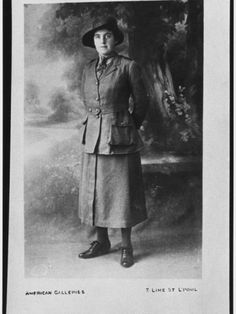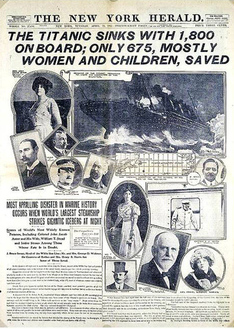Friends of Hastings Cemetery



Elsie was privately educated at Wycombe Abbey, a girls' boarding school in Buckinghamshire. (She remained involved with the school throughout her life, writing the biographer of its founder Miss Dove. During the war she established the Dove-
She went to Girton, Cambridge. and joined the WSPU in 1909 which was the most militant of the suffrage organisations. Her mother had joined the previous year in Hastings.
On 22 November 1910, Edith was assaulted and injured by a policeman during a suffragette riot in Parliament Square, London.
In 1911 the two women decided to treat themselves to a trans-
“The silence when the engines stopped was followed by a steward knocking on our door and telling us to go on deck. This we did and were lowered into life-
During WWI the suffrage movement encouraged women to volunteer for war work and Elsie joined the Women's Party and went round the country organising meetings, working closely with Christabel Pankhurst.
In 1916 Elsie volunteered as an orderly in the London Unit of the Scottish Women's Hospital and with this she travelled to serve the Serbian and Russian armies in Romania via Scandinavia and the length Russia and the Ukraine from Archangel to Odessa.
Elsie wrote a detailed diary of this experience including revolutionary 1917 St Petersburg. Her papers were with the Fawcett Library and are now at the LSE.
March 13th 1917, St Petersburg
Great excitement in street -
One ‘revolutionary’ came into our room to dress -
Shooting & shouting continuously all day in the street -
In 1920 she co-
As the Second World War approached, Elsie gave up her legal practice and was co-
In her Who's Who entry she made no mention of her involvement in the suffrage movement.
From the 1940s she spent her weekends at her flat in 23 Silchester Road, St Leonards but when her mother died she moved to Cowbeech, where she died after suffering a stroke, in 1972.
As one approaches the end of life an unaccountable feeling of melancholy creeps over one. This is not because of any fear of the life to come, rather a joyful anticipation.
Life has been so full of surprises that one cannot believe that there are not even greater joys and adventures in store.
Here's Au Revoir to all my friends and countless thanks for all their love and kindness which has given me such a happy life in this world -
Elsie Bowerman
|
She was buried in the family grave with her parents in Hastings cemetery. She left an estate worth £143,000. She was a founder member of the Old Hastings Preservation Society in 1952 and threw her energies into the campaign to save the Georgian Stable in High Street for a theatre. |
19th November 2005: a plaque was unveiled at 23 Silchester Road |
